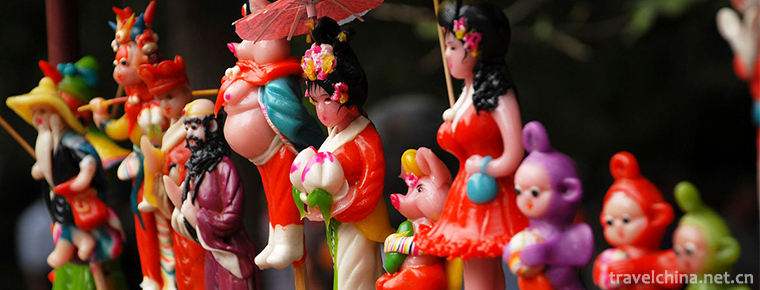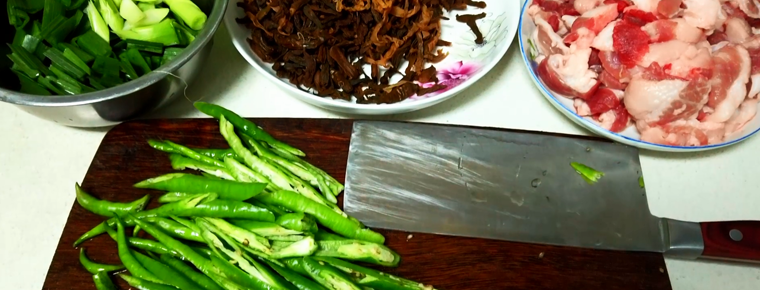2019-06-05

- By ChinaWiki.net
- Chinese Edition
- 2020-12-17
History of Leshan
Leshan used to be the capital of Kaiming tribe in ancient Shu state. In 309 B.C., King Wu of Qin sent troops to the south to wipe out the rule of the Kaiming family. The state of Qin established Nan'an County in Shizhong District of Leshan City. "Governing Qingyi and Jianghui", which is the intersection of Qingyi River and Minjiang River, belongs to Shu county. A large number of people moved from Jingshui area of Shaanxi Province to settle in Qingyi River Basin.
In the 59th year of King Nan of Zhou Dynasty (256 B.C.), Li Bing organized the people of Leshan to dig Wuyou from the pile and open the Mahao river. From then on, Minjiang River and Dadu River gradually developed in Leshan area.
During the reign of Emperor Wen of Han Dynasty in the Western Han Dynasty, Deng Tong, a native of Nan'an, minted coins. Emperor Wu of the Han Dynasty established Qianwei County, which belonged to Nan'an county.
During the Three Kingdoms period, Zhuge Liang, the Prime Minister of Shu state, smelted iron in Qianwei Tieshan to manufacture weapons and tools. Leshan's smelting scale and technology had reached an advanced level.
During the Wei, Jin, southern and Northern Dynasties, and the end of Eastern Jin Dynasty, it was analyzed that the county of yeguan was set up in Nan'an, focusing on the management of the rapidly developing iron smelting industry. During this period, more than 100000 Liao people who originally lived in Guangxi, Guizhou and Yunnan entered Sichuan, and a large number of Liao people lived in Qianwei Tieshan and Sanjiang River Basin. Living life lasted for more than 200 years.
During the northern and Southern Dynasties, because of the continuous wars, the organizational system of Leshan area changed frequently. In the third year of Jianwu (496), Leshan was under the jurisdiction of Meishan, and qitongzuo county (Meishan) was established in the south of Wuyang County, which belongs to Yizhou. Its jurisdiction includes today's Dongpo District, Qingshen, Danling, Hongya and Leshan Shizhong District, Jiajiang and Emeishan. The county is governed by Long'an village, Taihe Town, 10 kilometers north of today's Dongpo District.
Jiazhou was established in the Northern Zhou Dynasty. In the first year of Baoding in the Northern Zhou Dynasty (561), pingqiang county was established in the old city of Nan'an county. In the second year of xuanzheng (579), Jiazhou was established by pingqiang County, which was close to Hanjia old county in Han Dynasty.
In 583, pingqiang county was abolished; in the fourth year, Liping County was changed to Emei County; in the ninth year, it was changed to Qingyi County, named after qingyishui; in the 11th year, Yujin county was added; in the 13th year, Qingyi county was changed to Longyou County. It is said that when the Sui Dynasty army sailed from Chengdu to Leshan and pursued the defeated soldiers of Chen state, Minjiang River came into being In the 13th year, Jiajiang County was added. In the second year of Daye, Jiazhou (606) was incorporated into Meizhou; in the third year, Meishan County was changed to govern Longyou County. At this time, Leshan was able to build Huanglong ships and became an important shipbuilding base along the rivers in Sichuan.
In 618, Meishan County was changed to Jiazhou, belonging to Jiannan road. In the second year, four counties in Tongyi were restored to Meizhou. In the second year of Linde (665), Luomu county was established; in the first year of Shangyuan (674), Rongzhou Qianwei county was subordinate to Jiazhou; in the first year of Tianbao (742), Jiazhou was changed into Qianwei County; in the first year of Qianyuan (758), Jiazhou was restored. After Yi Feng, Jiazhou governed Longyou, pingqiang, Jiajiang, Emei, Luomu, Qianwei and Yujin counties. In the Tang Dynasty, tea industry was very developed. CEN Shen wrote a poem describing "half a kind of tea" outside Jiazhou city. The world famous Leshan Giant Buddha was built in the middle of Tang Dynasty.In 1196, Jiazhou was promoted to Jiading Prefecture, belonging to Chengdu Fu Road. After the abolition of Lomu, pingqiang, Yujin and other counties. There are five counties and one supervisor: Longyou County, Hongya County, Jiajiang County, Emei County, Qianwei county and Fengyuan county.
In 1276, Jiading Prefecture was promoted to jiadingfu Road, governing Longyou, leading one company, four counties, two prefectures, Lushi department, Longyou, Jiajiang, Emei, Qianwei, Qiongzhou, Meizhou. In Muchuan and other places set Mahu Road, now Muchuan, Mabian and other places are subordinate to Mahu road.
In the ninth year of Hongwu in Ming Dynasty (1376), jiadingfu road was descended to Jiading Prefecture in April. In September, Jiading Prefecture was descended to Jiading Prefecture, Meizhou to Meizhou, Qiongzhou to county, and Rongzhou to Rongxian county and Jiading Prefecture. In November of the 13th year (1380), Meizhou was restored to be a state. In the 19th year of Chenghua (1483), Qiong county was promoted to be a state. Lingliu county includes Leshan County, Emei County, Hongya County, Jiajiang County, Qianwei county and Rongxian county. In the Ming Dynasty, the Chief Secretary of Muchuan was established in Muchuan, Mabian and other places, under the jurisdiction of Mahu Prefecture.
In 1734, Jiading Prefecture was upgraded to Jiading Prefecture, and Leshan county was established in the prefecture. It was named as "there is" Leshan in the southwest of the city ". Longyou County was changed to Leshan County, and the name of Leshan is still in use today. There are seven counties and one hall: Leshan County, Emei County, Hongya County, Jiajiang County, Qianwei County, Rong County, Weiyuan County and Ebian hall. In the Qing Dynasty, the Chief Secretary of Muchuan established the Mabian hall, and later abolished the Chief Secretary of Muchuan into Pingshan County, and analyzed the establishment of Ebian hall in Emei county.
In 1935, Leshan county established the fifth Office of administrative inspectors. In 1943, Pingshan County set Muchuan county.
After the founding of new China, Leshan Commission was set up.
In 1950, Leshan special area was set up, belonging to the South Sichuan administrative region. Leshan special office is located in Leshan county. It has jurisdiction over Leshan, Qianwei, Muchuan, Pingshan, Leibo County, Mabian, Ebian, Emei and Jingyan counties.
In 1951, Qianqiao was set up as a county. Leshan District governs 1 city and 9 counties.
In 1952, the southern Sichuan administrative office was abolished and Leshan Prefecture was under the leadership of Sichuan Province.
In 1953, Meishan district was removed, and Meishan, Pengshan, Qingshen, Jiajiang, Hongya and Danling counties were included in Leshan district. It has jurisdiction over 1 city and 15 counties.
In 1955, Leibo, Mabian and Ebian counties were assigned to Liangshan Yi Autonomous Prefecture, and Ebian and Mabian counties were entrusted to Leshan special office. Leshan District governs 1 city and 12 counties.
In 1957, Pingshan County was assigned to Yibin special area. Leshan District governs 1 city and 11 counties.
In 1958, Renshou County, formerly Neijiang District, was included in Leshan district. It has jurisdiction over 1 city and 12 counties.
In 1959, Qingshen and Pengshan were merged into Meishan County, and Danling county was dissolved into Hongya County.
In 1962, Pengshan, Qingshen and Danling counties were restored. Leshan District governs 1 city and 12 counties.
In 1964, Wutongqiao city was changed into Wutongqiao District, which was under the jurisdiction of Leshan district.
In 1968, Leshan district was changed to Leshan area.
In 1978, Leshan county was merged with WUTONGQIAO district and changed into Leshan City (county level), which still belongs to Leshan area. Leshan Prefecture governs Leshan City (county level) and 11 counties including Jiajiang, Hongya, Danling, Qingshen, Meishan, Pengshan, Jingyan, Renshou, Qianwei, Muchuan and Emei.
In 1979, Jinkouhe district (county level) was set up by Jinkouhe District, which was originally belonged to Ebian County. Leshan district has jurisdiction over 1 city, 11 counties and 1 Industrial and agricultural district.
In 1984, Mabian and Ebian counties were abolished and Mabian and Ebian Yi autonomous counties were established, which were under the jurisdiction of Leshan Prefecture.
In 1985, Leshan District, Leshan City and Jinkouhe industrial and agricultural district were abolished, and prefecture level Leshan City and Shizhong District, Wutongqiao District, Shawan District and Jinkouhe district were established.
In 1988, Emei county was abolished and Emeishan City (county level) was established, which was managed by Leshan.
In 1997, Meishan, Pengshan, Renshou, Qingshen, Danling and Hongya counties were set up as prefecture level Meishan City. Leshan governs four districts, one city, four counties and two Yi Autonomous Counties.
Leshan administrative division
By the end of 2019, Leshan City has jurisdiction over four districts (Shizhong District, Wutongqiao, Shawan and Jinkouhe), one county-level city (Emeishan City), four counties (Qianwei, Jingyan, Jiajiang, Muchuan) and two Yi Autonomous Counties (Ebian and Mabian). No. 98, Binhe Road, Shizhong District, Leshan Municipal People's government.
Ask a Question
Your email address will not be published.



0 Questions